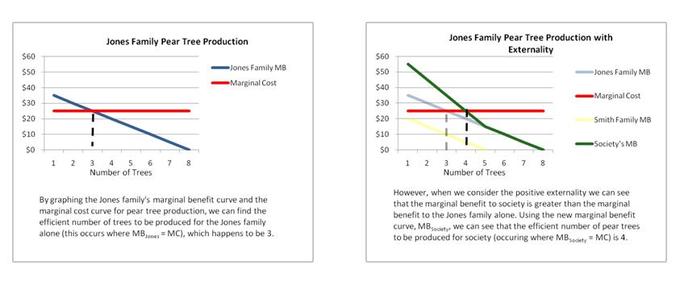Types of Private Solutions
Private actors will sometimes effectively address externalities and reach efficient outcomes without government intervention.
Learning Objectives
- Evaluate how effective private solutions may be in solving market failures produced by externalities
Government intervention is not always necessary to address externalities. Private actors will sometimes arrive at their own solutions.
There are several types of private solutions to market failures:
- Moral codes: Moral codes guide individuals’ behavior. Individuals know that certain actions are simply not “the right thing to do” or would elicit disapproving reactions from others. This is illustrated in the case of littering. The likelihood of being fined may be small, but moral codes provide an incentive to refrain from littering.
- Charities: Charities channel donations from private individuals towards fighting to limit behaviors that result in negative externalities or promoting behaviors that generate positive externalities. The former can be seen in the case of organizations that protect the environment, while the latter is exemplified through organizations that raise money for education.
- Business mergers or contracts in the self interest of relevant parties: Two businesses that offer positive externalities to each other can merge or enter into a contract that makes both parties better off.
The Coase theorem, which was developed by Ronald Coase, posits that two parties will be able to bargain with each other to reach an agreement that efficiently addresses externalities. However, the theorem notes several conditions in order for such a solution to occur, including low transaction costs (the costs the parties incur by negotiating and coming to agreement) and well-defined property rights. If the conditions are met, the bargaining parties are expected to reach an agreement where everyone is better off. In practice, however, transaction costs do exist, and the bargaining process does not always run smoothly. As a result, private individuals often fail to resolve problems.
The Coase Theorem
The Coase theorem states that private parties can find efficient solutions to externalities without government intervention.
Learning Objectives
- Explain the usefulness and shortcomings of the Coase Theorem.
The Coase Theorem, named after Nobel laureate Ronald Coase, states that in the presence of an externality, private parties will arrive at an efficient outcome without government intervention. According to the theorem, if trade in an externality is possible and there are no transaction costs, bargaining among private parties will lead to an efficient outcome regardless of the initial allocation of property rights.

Efficient Solution: According to the Coase theorem, two private parties will be able to bargain with each other and find an efficient solution to an externality problem.
Imagine a farm and a ranch next to each other. The rancher’s cows occasionally wander over to the farm and damage the farmer’s crops. The farmer has an incentive to bargain with the rancher to find a more efficient solution. If it is more efficient to prevent cattle trampling a farmer’s field by fencing in the farm, rather than fencing in the cattle, the outcome of the bargaining will be the fence around the farm.
Take another example. The Jones family plants pear trees on their property which is adjacent to the Smith family. The Smith family gets an external benefit from the Jones family’s pear trees because they pick up the pears that fall on the ground on their side of the property line (see ). This is an externality because the Smith family does not pay the Jones family for the utility received from gathering fallen pears. As a result, the Jones family plants too few pear trees. In response, the Jones family can put up a net that will prevent pears from falling on the Smith’s side of the property line, eliminating the externality. Alternatively, the Jones could impose a cost on the Smith family if they want to continue to enjoy the pears from the pear trees. Both parties will be better off if they can agree to the second scenario, as the Smith family will continue to enjoy pears and the Jones family can increase the production of pears.

Effects of Externalities: This graph exemplifies how Coase’s Theorem functions in a practical manner, underlining the effects of an externality in an economic model.
In practice, transaction costs are rarely low enough to allow for efficient bargaining and hence the theorem is almost always inapplicable to economic reality.




